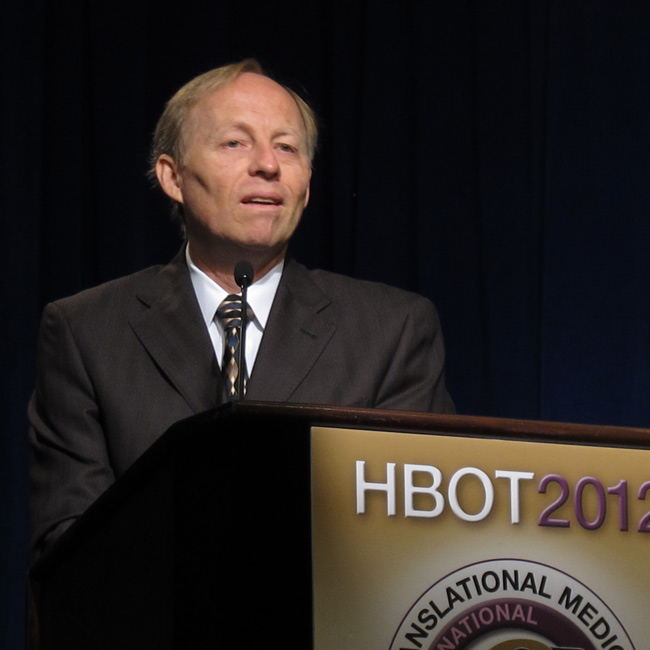Alternative Therapies in Health and Medicine (ATHM): To start can you provide me a little bit about your background.
Dr. Harch: I went to college at the University of California Irvine and then medical school at Johns Hopkins. After medical school I went to the University of Colorado and did two years of general surgery training, an additional year of radiology training in New Orleans at LSU Charity Hospital and then while I was in New Orleans had a practice-based experience of emergency medicine. The second year I was in New Orleans, 1985, I joined a group that had a large hyperbaric chamber and received all of the diving medicine referrals for the Gulf of Mexico. Part of that practice also was wound care. So it was a hyperbaric medicine practice. I went and received training in hyperbaric medicine from the federal government and made a discovery treating our divers from the Gulf of Mexico that involved brain decompression illness, which was pretty much ignored for most of its existence or at least a hundred years in the diving medicine field.
Importantly, we found a way that we could image and treat brain decompression illness. It turns out 80% of decompression sickness is neurological, it’s not the joint “bends.” We found that we could treat these divers with brain involvement weeks, months, or long after it was considered treatable and capture the results on very illustrative brain blood flow scans. Prior to this discovery it was understood that you had to treat divers within 24 hours of the injury or it was permanent. Once we made that discovery in divers, we started treating some Louisiana boxers and then the first cerebral palsy children, autistic children, people with stroke, toxic brain injury, and over the years now, probably 90 different neurological diagnoses. I’ve done this in both formal animal and human studies and as a clinical application. The research studies included the first veterans with TBI and PTSD and in March we published a randomized trial of HBOT in the treatment of traumatic brain injury post-concussion syndrome in civilians and veterans. Also, in March I brought to the public’s attention that we very likely could treat dying patients with coronavirus which brings us up to today.
…
ATHM: Let’s talk a little bit about the Coronavirus because that’s the topic that’s hot right now. How does hyperbaric oxygen therapy relate to it?
Dr. Harch: Well, it corrects what people are dying of, which is low oxygen in the blood, and treats the underlying disease in the lungs. Patients who are in the process of deteriorating and going on a ventilator are the best candidates. If people get the infection and a certain percentage of them proceed to very serious lung infection, there’s a point in the process where, and it’s not clear why, the ones with the risk factors go downhill in a hurry. Generally it’s over about a 48 hour period and or even less. Sometimes it is in just an hour or so. And when they do deteriorate it is due to an intense inflammatory reaction in their lungs. Eventually, they die of low oxygen level s that cause end organ damage, such as heart, brain, kidney damage, and multiorgan failure.

